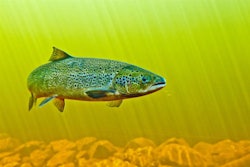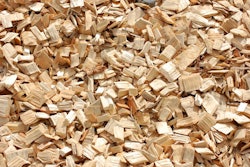
Scientists aim to ‘take the science out’ of raising black soldier flies for animal feed.
Texas A&M Professor Jeff Tomberlin believes the insect meal industry may be on the cusp of a revolution when it comes to raising black soldier flies.
“You could say it’s a niche today,” he said, “but as we learn more about the insect and how to utilize it, it will become a more commonplace feed ingredient.”
Black soldier flies hold immense promise as a source of protein in animal feed, Tomberlin said. But the insect meal sector has a problem with scale.
Although it’s not particularly hard to raise black soldier flies — the fact that they’re low maintenance is one of the insect’s selling points, Tomberlin said — commercial operations run into difficulties when trying to scale up production of insect meal.
“For me, it’s pretty easy” to raise black soldier flies, said Tomberlin, who has been researching and raising black soldier flies for 21 years. “But for anyone in the industry that is new or trying to expand, with each scale expansion they run into issues. If we can continue to refine the process, I think we can streamline it and make it easy for anyone.”
Developing a standardized approach
There has been progress, Tomberlin said, thanks to growing scientific interest in the species. Prior to 2001, there were essentially no published papers on the mass production of black soldier flies. Just a decade ago, scientists developed methods to raise black soldier flies indoors under artificial lights.
The final step toward the commercialization of black soldier flies, he said, is finding a way to stabilize a domesticated colony.
Colonies of black soldier flies are subject to extreme variability, according to Tomberlin. Adult soldier flies lay just one batch of eggs, and if the flies haven’t mated prior to that point, the eggs won’t hatch.
Tomberlin, alongside his colleagues, hopes to solve this problem, and has seen some success. His team has developed a method for putting larvae into hibernation, so they can be stored at room temperature until the time is right. In September, a paper he co-authored and published in Annals of the Entomological Society of America detailed how different population densities in commercial colonies affected adult emergence rates. Unsurprisingly, according to the authors, lower larvae densities were associated with greater success.
Tomberlin believes the insect meal industry could be worth $20 billion dollars in the next 10-15 years. But to get there, he said, this line of research must continue — which will require investment from industry, academia and even governments.
“The industry needs to grow to the point that it can supply enough insect meal to meet demand,” he said. “And, right now, we’re not there yet.”














